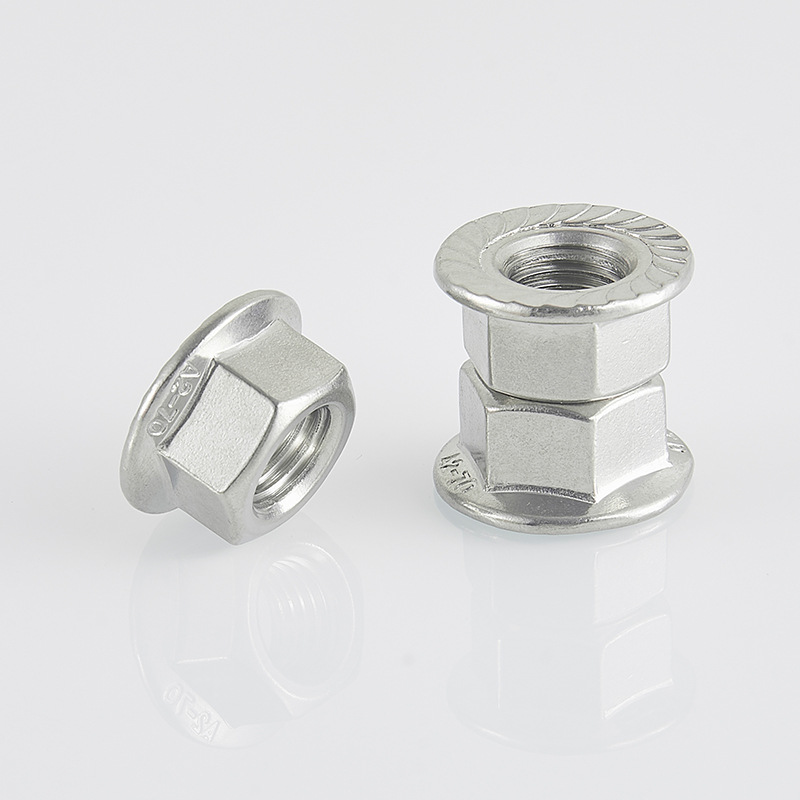

Exploring the Benefits and Applications of Large Rivet Nuts in Modern Engineering
Nov . 27, 2024 07:20 Back to list
Exploring the Benefits and Applications of Large Rivet Nuts in Modern Engineering
Understanding Large Rivet Nuts Applications, Benefits, and Installation
Large rivet nuts, often referred to as rivet nut inserts or blind rivet nuts, are specialized fasteners that provide strong, load-bearing threads in materials that are too thin for traditional threading methods. This innovation has revolutionized various industries, enabling secure assemblies in challenging environments such as automotive, aerospace, and consumer electronics.
What Are Large Rivet Nuts?
A rivet nut is a type of fastener that combines the best characteristics of a rivet and a nut. They are typically made from materials like aluminum, steel, or stainless steel, and designed to provide tensile strength and stability. Large rivet nuts, as the name suggests, come in larger sizes, allowing them to support heavier loads and withstand higher torque applications. Their versatility ensures they can be employed in scenarios where the materials being fastened are too thin, brittle, or compromised to be threaded directly.
Applications of Large Rivet Nuts
Due to their strength and reliability, large rivet nuts find extensive use in a variety of sectors. In the automotive industry, they are commonly utilized in vehicle assembly for securing components like panels, brackets, and other fixtures. In aerospace, the need for lightweight yet strong fasteners makes large rivet nuts ideal for attaching components without adding unnecessary weight. Additionally, manufacturers producing electronic devices use large rivet nuts in assembly processes where durability and precision are paramount.
Large rivet nuts are also favored in construction and furniture manufacturing, providing a secure fastening solution for metal and composite materials that require reliable thread engagement. Their ability to create strong connections even through blind holes makes them essential in situations where access is limited.
Benefits of Using Large Rivet Nuts
1. High Load Capacity Larger rivet nuts can bear significant loads, making them ideal for heavy-duty applications. Their design allows distribution of stress over a broader area, reducing the risk of material deformation.
large rivet nuts

2. Versatility They can be used in various materials, including thin metals, plastics, and composites, making them suitable for all types of manufacturing and assembly needs.
3. Ease of Installation Large rivet nuts can be installed quickly and easily, often requiring minimal tooling. Some varieties can be installed using simple hand tools or pneumatic equipment, increasing operational efficiency.
4. Reduced Risk of Damage Unlike traditional threading methods which can weaken the material, rivet nuts create a permanent support without compromising the integrity of the host material.
5. Blind Fastening Capability The ability to fasten from one side of an assembly is a significant advantage. This feature is especially beneficial in applications with limited accessibility.
Installation Process
Installing large rivet nuts generally involves several steps. First, a hole is drilled into the base material, followed by inserting the rivet nut into the hole. Once properly seated, a mandrel is utilized to expand the nut's base, securing it tightly against the material. The process is quick and efficient, minimizing downtime and labor costs.
Conclusion
Large rivet nuts offer a robust, reliable fastening solution across multiple industries. Their high load capacity, ease of installation, and versatility make them indispensable in manufacturing and assembly lines. As technology continues to advance, the demand for such innovative fastening solutions will grow, solidifying large rivet nuts' role in the development of modern products and structures. Understanding their benefits and applications not only enhances design and structural integrity but also improves operational efficiency in various sectors.
Latest news
-
Premium Fasteners Manufacturer | AI-Driven Solutions
NewsAug.01,2025
-
Hot Dip Galvanized Bolts - Hebei Longze | High Strength, Corrosion Resistance
NewsAug.01,2025
-
High-Strength Hot Dip Galvanized Bolts - LongZe | Corrosion Resistance, Custom Sizes
NewsAug.01,2025
-
Best Self Tapping Screws for Drywall - Fast & Secure Installation
NewsJul.31,2025
-
High-Strength Hot Dip Galvanized Bolts-Hebei Longze|Corrosion Resistance&Customization
NewsJul.31,2025
-
Hot Dip Galvanized Bolts-Hebei Longze Metal Products|Corrosion Resistance&High Strength
NewsJul.31,2025

